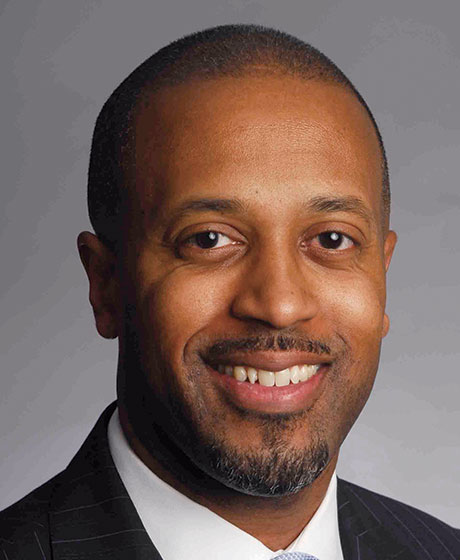
executive director’s note
by Vernon M. Billy
The link between safe schools and Full and Fair Funding
near universal truth about California’s Legislature is that its members are sensitive to hot-button issues, and will always seek to respond in some way, shape or form. If it’s been in the news, there will be a bill about it. You can set your watch to it.
In this edition of California Schools, we discuss in detail the crucial topic of school safety. In 2018, it is impossible to discuss this issue without recognizing how the tragic shooting at Marjory Stoneman Douglas High School in Parkland, Florida, has influenced our thinking and hastened the need to address a wide range of school safety issues. This horrific incident claimed the lives of 17 students, teachers and school staff — only to be followed in May by another shooting at Santa Fe High School in Texas, which took the lives of 10.
Unfortunately, not only did these tragic shootings result in the loss of life, but it also seemed to have triggered a rise in threats of violence on school campuses in the days immediately following. USA Today reported in March that, based on published accounts in the media, there were more than 130 threats of school violence nationwide in a nine-day span immediately following the Parkland shooting.
The same article cited additional statistics from the Educator’s School Safety Network, which found more than 630 reported threats of violence on school campuses nationwide post-Parkland, from Feb. 15 to Feb. 27, with 37 of those occurring in California. A separate ESSN fact sheet claims that, in the 30 days following Parkland (Feb. 15 through March 16), there was an average of 59 threats and incidents per school day, which represents a 300 percent increase from an average of 13.2 per school day in the prior 108 days of the academic year.
ESSN tracked 110 such incidents in California alone during the same period, more than any other state.
USA Today reported in March that, based on published accounts in the media, there were more than 130 threats of school violence nationwide in a nine-day span immediately following the Parkland shooting.
There can be no argument made against the fact that something must be done to address what has become an epidemic of violent incidents and threats in our schools, and that those solutions must come from all levels of government. However, to be successful in improving campus safety, interventions and strategies must be properly vetted and meticulously executed.
Inevitably, we also have to figure out how to pay for them.
Our feature stories in this magazine offer several insights on the issue and local lessons on how education leaders around the state have been successful in addressing school safety on their campuses.
CSBA’s Delegate Assembly acts:
At its May meeting, CSBA’s Delegate Assembly members participated in breakout sessions on school safety with their colleagues from around the state to discuss school safety-related issues in their districts, and how they are addressing them. Delegates provided CSBA staff with a bevy of information and recommendations for how CSBA can help school districts and county offices of education address a wide range of school safety-related issues. The input and recommendations from Delegates will inform CSBA’s legislative, policy and member training efforts surrounding school safety as this year progresses, and in future years.

While many of our school district and county office leaders face similar issues and have likewise shared concerns, the “degree” to which each entity expressed concern about the myriad topics was as different as each district and county office. In fact, a comment made to me by Lucerne Valley USD board member and CSBA Delegate Tom Courtney at a meeting prior to the Delegate Assembly was certainly not lost on me or CSBA staff. Tom explained that in his area it could take law enforcement up to an hour or two to respond to a major incident due to their geographic isolation.
This is just one small example of the various issues board members must grapple with as they try to keep schools safe and respond to ever-increasing efforts by the Legislature to mandate one-size-fits-all solutions on local educational agencies.
The Legislature responds … sort of
School safety is a complex topic requiring the implementation of various strategies that address, among other things, school facilities, community engagement, and the social and emotional health of students. A trip through the labyrinth of bills introduced by the Legislature this year finds more than 50 proposals that, in some form or another, seek to address student mental health and school safety. To the surprise of no one, most of those bills had significant price tags attached to them. Twenty of these 50 bills would create a new state-mandated program. However, only two actually identify a potential funding source.
As is typical, many of these proposals have been whittled down to less costly (and as such, less impactful) endeavors after the journey through policy committees and subsequent appropriations hearings — if they even survived at all. But, regardless of funding shortcomings or amendments, this onslaught of bills to improve school safety and student mental health is certainly well-intentioned.
In a perfect world, most, if not all, of these measures would be implemented. We’ll never have a perfect world, but the world doesn’t have to be perfect for California to not rank so woefully low in education funding. Schools revolve around students and the adults that serve them, and there has to be a fundamental recognition from the Legislature of what that means in the context of student health and safety, and of education funding.
This is the crux of CSBA’s Full and Fair Funding effort. Full and Fair Funding creates the opportunity for students to have access to smaller class sizes, more counselors and safer schools, because it creates the resources that will allow local leaders to make smart, robust investments in all of these areas. While the Legislature’s focus on these issues is always welcomed, such efforts ring hollow when schools are continuously asked to do more with less, and these proposals are not backed with the real, tangible dollars needed to help create systemic change in how we approach protecting students from the social, mental and physical dangers in the wide ranges of school safety issues that are so pervasive in many communities.
If the Legislature is serious about responding to the safety needs of schools and ensuring the health and well-being of every student, then it has to fund our schools in a way that actually allows for response.
